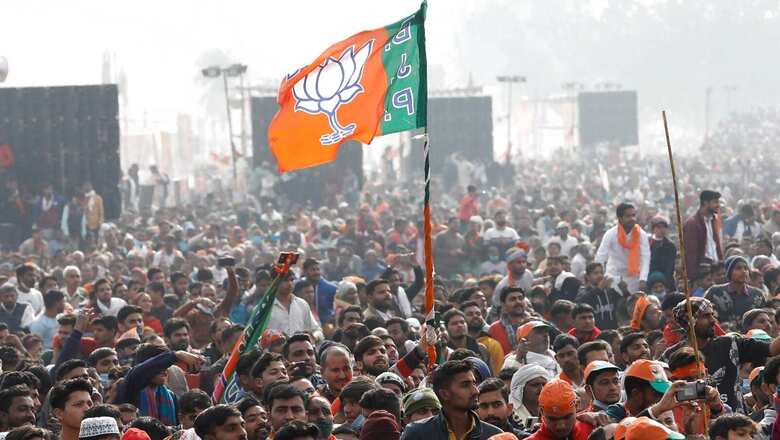
views
In his latest book, Nalin Mehta has chosen to attack us on one of our key observations and arguments regarding the relation between caste and politics in North India. He argues that we missed the transformation of the BJP under Narendra Modi who, according to him, is not only more representative of the OBCs, but also defends them. He also produces caste data that he claims challenge the integrity of the data we have gathered. In this response, we want to address both the empirical and substantial aspects of Mehta’s critique.
Variations in Caste Data
Mehta claims that there are substantial differences between the data that he and his team collected and the data collected by the Trivedi Centre for Political Data (TCPD). A close examination of the data available in Mehta’s book and that we have gathered suggests that the stated differences come more from differences in categorisation than variations in the raw data. For instance, the Mehta-Singh Social Index classifies Jats in Uttar Pradesh as OBCs, whereas we classify them under intermediary castes. Further, their calculation for the 2017 and 2019 elections in Uttar Pradesh include the BJP’s allied partners, small OBC parties such as the Apna Dal, which affects the overall percentage of OBCs. Our analysis focused on the BJP.
A comparison of jati-level data in the book’s appendix shows that when we account for these categorisation differences, there remain some variations between our respective datasets. For instance, the Mehta-Singh Social Index counts 118 OBCs among the BJP candidates of the 2017 elections (including Jats and excluding 6 non-BJP candidates). For argument’s sake, if we include Jats, too, our dataset would count 113 OBCs. This difference may come from residual variations between our datasets, but are clearly not of an amplitude that justify such categorical rejection of our gathered data.
Contrary to Mehta’s claim that caste is an ‘easily demonstrable fact’, it has been seen over the years that caste identification is a difficult process, subject to contention and debate. For instance, some refer to the same caste using different names, such as Yadav and Ahir. Some regard a particular sub-caste as being within a larger caste and therefore do not distinguish between the two, while others refer to it as a separate one. Even seasoned political observers are not always familiar with the subtleties of caste heterogeneity, particularly among SCs, Muslims or even OBC castes.
No index or data is free from measurement error, which is why TCPD’s caste data collection follows a rigorous protocol of repeated measurements and data verification. The data is collected through fieldwork by trained members of the TCPD team who collect information for each individual from at least two sources. Our sources include party cadres and workers, journalists and local correspondents, local political observers, members of caste associations and other individuals deemed reliable sources. We complement this exercise using newspaper reports, which are also cross verified.
The data is then categorised, coded and sent for further verification to scholars who have expertise on that state’s caste politics. The data is also subjected to regular consistency checks through automated scripts, which identify possible coding inconsistencies. We run further checks using our individual incumbency dataset, in which contestants to elections have been given a unique identifier code. This helps us check that the same individuals do not get labelled differently across elections. When inconsistencies are spotted or when different sources provide different information about the same individual, they are verified by a member of our team or sent to a local expert for verification. Candidates whose caste identity could not be ascertained remain labelled as unidentified. Asserting that we code caste simply through name recognition is inaccurate, and we are well aware of the danger of associating castes with surnames.
Does this mean that our data is error free? Certainly not. One cannot claim to do (social) science and say that they are not prone to errors. Therefore, given the complexity of the task, we are not surprised if two teams conducting a similar large-scale complex data collection exercise produce some variations.
The main difference to our mind lies in Mehta’s interpretation of data, which indeed completely differs from ours.
BJP MPs, MLAs and Governments: What Plebeianisation?
If Mehta had cited our work in a spirit of intellectual honesty – and the academia is a milieu where we agree to disagree provided the other’s arguments are portrayed honestly – he would have mentioned that we showed that the BJP followed a trajectory of plebeianisation in North India. This is, in fact, a key argument of one of our articles on the 2019 elections in which we demonstrate that the party has promoted non-dominant OBC jatis and non-dominant Dalit jatis. Regarding the state of Uttar Pradesh, on which Mehta concentrates, we argue that the BJP leaders have co-opted non-Yadav and non-Jatav candidates for circumventing these two caste groups. Indeed, the categories of SCs and OBCs make little sense since the 1990s but need to be disaggregated – something Mehta does not do systematically enough, especially when he describes “the OBCs as the most numerically preponderant caste” on the BJP side (p.34).
A case in point is his chart titled ‘Yogi Adityanath’s BJP Government in UP Gave Highest Representation in Council of Ministers to OBCs’ (p.45). The chart shows that over three years, 35.1 per cent of portfolios have been allocated to OBC ministers. The upper castes in this chart are disaggregated into Brahmin ministers, Thakur ministers, Vaishya/Baniya ministers, and so on. By adding Mehta’s own data in this chart, upper castes occupy 48 per cent of all portfolios, while representing roughly 20 per cent of UP’s population. The data presentation here is clearly adjusted to fit the argument.
Furthermore, we also argue that the BJP’s strategy of appeal to non-dominant OBCs (and not all the OBCs) runs in parallel to a resurgence of upper castes in the Hindi belt where the BJP’s strongholds are located – something Mehta denies, this time, by using facts selectively. He says: “Modi claimed a preponderance of lower classes in BJP’s elected representatives. Jaffrelot and Vernier [sic], using a database on the social backgrounds of elected legislators co-produced by Ashoka University’s Trivedi Centre for Political Data, claimed a growing upper-caste stranglehold on the BJP in the Modi–Shah years”. But in the previous page he cites the data Modi gives regarding the BJP MPs in India as a whole, whereas the figures we give are for the Hindi belt only – and these two statistical data are perfectly compatible!
In the Hindi belt, 47.6 per cent of the BJP MPs came from upper castes in 2014. As a result, the percentage of MPs from upper castes overall took an upward turn at 44.5 per cent, on par with its representation level in the 1980s, whereas the share of OBCs dropped to 20 per cent.
In Uttar Pradesh, in 2017, the proportion of upper-caste MLAs jumped by 12 points, reaching over 44 per cent (its 1980 level) owing to the BJP’s landslide: 48 per cent of the party’s MLAs are from upper castes (compared to 23 per cent OBCs and no Muslims). The situation reflects the fact that the BJP has often endorsed upper caste candidates.
Mehta’s biggest mistake still lies elsewhere: to focus on MPs is not enough because parliamentarians are not as influential – especially since 2014. To study the composition of the Modi government is more important. Unfortunately, Mehta ignores this site of power where upper-caste politicians staged a comeback in 2014 and even more in 2019.
The over-representation of upper castes among the BJP MPs was nothing compared to the sociology of the Modi government, where they represented, at the time of the government’s formation, 79.4 per cent of the Cabinet ministers and ministers of state. As K. Adeney and W. Swenden have shown, such an over-representation had never prevailed since the Mandal moment.
In 2019, out of 55 government members, 47 per cent were from the upper castes (including 18 per cent Brahmins), 13 per cent were from intermediate castes (Jats, Patels, Reddys, etc.), 20 per cent were OBCs, 11 per cent were from the Scheduled Castes and 7 per cent from the Scheduled Tribes. The rest – 2 ministers belonged to religious minorities (one Muslim and one Sikh). Why doesn’t Mehta cite this easily accessible data generated by TCPD?
Certainly, the 2021 ministerial reshuffle of Modi’s government has made some difference: after 36 new faces were inducted, 47 ministers and MoS now belonged to the OBCs, SCs and STs and therefore the overall presence of upper castes in the Council has come down from 47 per cent in 2019 to 32.5 per cent, but this is a much later development, and upper castes are still in a majority among the Cabinet ministers. They occupy 16 out of the 31 cabinet berths – controlling portfolios such as Home, Defence, Finance, External Affairs, etc. There are 6 Brahmins, 4 Rajputs, 2 Vaishyas, 2 Khatris, one Bhumihar, and one Kainat.
Besides these, dominant intermediate castes like Marathas (2), Patels (2) and Reddys (1) have secured token representation in the Cabinet leaving only 2, 3 and 5 berths respectively for SCs, STs and OBCs. Secondly, among the OBCs, there are only two Yadavs, and among the SCs, one Jatav – a group associated with BSP in UP. In fact, the profile of the 7 leaders from UP who were inducted in August 2021 is very revealing: one was Brahmin, two Kurmis, one Gaderia, one Lodh, one Kori and one Pasi – not even one Yadav or one Jatav. The reshuffle of the Union government and the UP government were clearly decided in view of the elections in India’s largest state. All this information was also easily available.
Diluting Positive Discrimination for SCs and OBCs
Besides political representation, policies matter. Writing about positive discrimination, Mehta emphasises the fact that, at last, the Modi government has given the OBC Commission a constitutional status “to solve the problem of backward classes” (p.50). It is one thing to quote speeches. It is another matter altogether to analyse the BJP government’s impact on positive discrimination policies, which have been diluted.
For instance, the funds earmarked for Dalit education in the Indian budget have been reduced. While this budget item, within the Special Component Plan (a subcategory of the annual budget), is supposed to be proportional to the demographic weight of the Dalits, 16.6 per cent, it fluctuated between 9 and 6.5 per cent during Modi’s first term. As a result, scholarship funds were cut drastically. Nearly 5 million Dalit students have been affected by this reduction and – once again – by delays in payment.
Secondly, the erosion of the public sector has resulted in a steady decrease in the number of jobs available to Dalits under the reservations framework. The number of civil service candidates shortlisted by the Union Public Service Commission (UPSC) dropped by almost 40 per cent between 2014 and 2018, from 1,236 to 759. The number of jobs in the Public Sectors Undertakings also declined due to the rise in positions left vacant, and privatisation.
Third, the introduction of a 10 per cent quota in 2019 for the economically weaker sections (EWS) has altered the standard definition of backwardness and has not helped the poor, contrary to Modi’s claim, cited by Mehta, who defines EWS as “the poor among the non-reserved, general category” (p. 96). By setting a gross annual income limit of under Rs 8,00,000 (10,667 US dollars) for classifying households under EWS, the government made this quota accessible to about 99 per cent of the upper castes – not solely to the poor. For Ashwini Deshpande and Rajesh Ramachandran, it “completely overturn[ed] the original logic of reservations on its head”.
By introducing this quota, the Modi government sent a two-fold message: one, the Mandal moment is over as caste-based quotas are no longer the only reservation technique. And two, the upper castes – including the rich ones – will be in a position to get jobs that would otherwise have been taken by OBCs or SCs. Indeed, the SCs/STs/OBCs who, thanks to their marks, would have made it through the general category would not be able to do so anymore because the 10 per cent quota in this general category decreases the number of seats available.
In defence of caste hierarchy
Finally, besides representation and policy, discourse also matters. Not only were upper castes back in larger numbers at the helm of the Indian state(s), but the BJP leaders also eulogised their moral superiority without any inhibition. Inaugurating a “Brahmin Business Summit” in Ahmedabad, the BJP Speaker of the Gujarat Assembly, Rajendra Trivedi, himself a Brahmin, seized this opportunity to valorise his caste fellows: “After studying Constitutions of 60 countries in detail, do you know who made a draft Constitution and handed it over to Dr Babasaheb Ambedkar? It was B.N. Rau …. Benegal Narsing Rau means Brahmin,” an oblique attack on Dalits who are usually proud of the fact that one of them, Dr. Ambedkar, had been the architect of the Indian Constitution.
Trivedi also said that “Of eight Nobel Prize winners in India, seven have gone to Brahmins. Does anyone remember the name of the ninth Nobel Prize recipient? Abhijit Banerjee got it. Abhijit Banerjee means a Brahmin”. During the same meeting, the Chief Minister of Gujarat, Vijay Rupani emphasised the brahminical roots of the Sangh Parivar, something the organisation had, till then, avoided. He declared: “The Brahmin community has always spoken about national interest, and because of that, the community has joined with the BJP and the RSS” – as evident from the fact, he said, that the Jana Sangh had been created by three brahmins in Gujarat.
The BJP Speaker of the Lok Sabha, Om Birla, went one step further, as the way he extolled Brahmins came across as a defence of the caste system: “Brahmin community always works towards guiding all other communities, and the community has always held a guiding role in this nation. It has always played a role in spreading education and values in the society. And even today if just one Brahmin family lives in a village or a hutment, then that Brahmin family always holds a high position due to its dedication and service… hence, Brahmins are held in high regard in society by the virtue of their birth.”
Until then, Sangh Parivar ideologues had shied away from attributing the superiority of Brahmins to their birth. They usually claimed – using the vocabulary they had inherited from reformists and revivalists like Swami Dayananda Saraswati – that if Brahmins were at the top of society, it was because of their qualities (gun). Birla was saying something different, and in the same vein he also defended caste endogamy as the best way to sustain social order and unity.
Speaking on the occasion of a Brahmin “Parichay Sammelan,” a gathering of Brahmins meant to help them to choose Brahmin spouses for their sons and daughters, he added: “If we want to bind the society together, then there is only one arrangement today; like our ancestors used to forge alliances for marriage, we today have parichay sammelan, and if we want to save the society, then this is the lone alternative.” For Om Birla the unity of his society can only come from the caste order – it must, therefore, be hierarchical.
Indeed, the BJP leaders have displayed caste-based observances that reflected their belief in the supposed “impurity” of Dalits. For instance, after Yogi Adityanath was elected Chief Minister of Uttar Pradesh, Hindu priests “made elaborate arrangements for sacred purifying rituals at the sprawling chief minister’s bungalow” , which had been previously occupied by Akhilesh Yadav, Mayawati and Mulayam Singh Yadav. Similar rituals were also organised in Udupi by a Sangh Parivar affiliated group in the surroundings of the Sree Krishna temple, “alleging that it was rendered ‘impure’ due to the presence of Dalit” demonstrators.
Incidentally, the Information and Broadcasting Ministry and the Ministry of Social Justice and Empowerment issued orders stating that the word “Dalit” – which denotes assertion – should not be used anymore in official communication, but only the term “Scheduled Caste”. All this information was easily available.
A Scholarly Conclusion
To conclude, every author is entitled to voice their views and arguments, and critique the views and arguments of others, under the condition, however, that they provide an honest account of the latter. Datasets that originate from field data collection will always generate some measure of variations, which can be sorted through discussion and comparison of notes, rather than by the mischaracterisation of other scholars’ work.
Secondly, we agree that Modi’s BJP is different from the “old BJP”, but not for the reasons Mehta gives: the way the party relates to caste remains very similar to what it was in the past, and the way its leaders eulogise caste hierarchy – not an insignificant claim – echoes what Deendayal Upadhyaya himself used to say about the Varna system. In his book, Integral Humanism, published in 1965, he argues that “society is self-born” and forms an “organic unity” inherited from a caste-based antiquarian arrangement that should not be disturbed:
“In our concept of four castes, they are thought of as an analogous to the different limbs of Virat-Purusha (…) These limbs are not only complementary to one another, but even further, there is individuality, unity. There is a complete identity of interest, identity of belonging.”
This social harmony is necessarily hierarchical, as evident from the metaphor of the body inherent in the Virat-Purusha (where the Brahmin comes from the mouth whereas the Shudra was born from the feet), but it should not be disturbed from outside forces, at least not from the state, a traditionally weak institution for Upadhyaya.
Modi’s BJP is different because to defend a social order dominated by upper castes, it has successfully co-opted non-dominant OBC jatis as well as non-dominant Dalit jatis and promoted an encompassing Hindutva identity (against the Muslim “Other”) at the expense of caste and class – the tactic followed by national-populists across the globe. The objective was to neutralise the main architects of the “Mandal moment” – regional parties backed by Yadavs and Jatavs – and avoid, therefore, what the RSS mouthpiece, The Organiser, called “a Shudra revolution”.
It has worked fine for many years, but the reshuffles of the Union and the UP governments last year showed that BJP needed to make more concessions to the non-dominant OBCs and Dalits, as caste mattered more and more. That being said, the current troubles the BJP faces in Uttar Pradesh with its own OBC leaders indicate that mere descriptive representation does not necessarily lead to actual empowerment.
Christophe Jaffrelot is senior research fellow at CERI-Sciences Po/CNRS, Paris, Professor of Indian Politics and Sociology at King’s India Institute, London, and non-resident scholar at the Carnegie Endowment for International Peace.
Gilles Verniers is Assistant Professor of Political Science, Co-Director, Trivedi Centre for Political Data, Ashoka University. The views expressed in this article are those of the authors and do not represent the stand of this publication.
Read all the Latest Opinions here














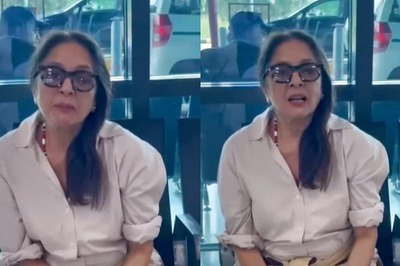
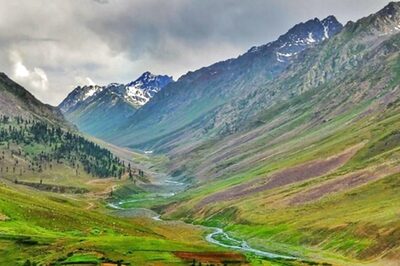

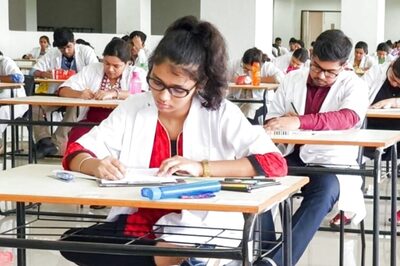
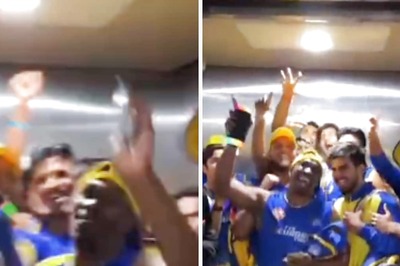
Comments
0 comment